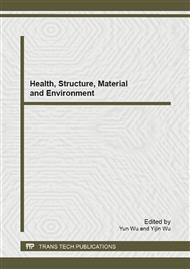p.3
p.8
p.14
p.17
p.21
p.27
p.31
p.37
p.42
Verification and Analysis of Conversion Factor for Pavement Damage Ratio Based on Bayesian Method
Abstract:
To improve the Pavement Damage Ratio Model of Mississippi State for predicting pavement condition effectively, the conversion factors of this model should be modified. In this paper, based on the Bayesian Method, verification and analysis of the conversion factors for the original DR Model are presented. The modified conversion factors turn out to match better with the actual situation nowadays and predict the pavement condition with higher accuracy. The results of this paper show that the original model deviates a lot from the expert evaluation, and after the modification, the deviation is reduced. The modification procedure can be continued in use of the Bayesian Method.
Info:
Periodical:
Pages:
21-26
Citation:
Online since:
February 2013
Keywords:
Price:
Сopyright:
© 2013 Trans Tech Publications Ltd. All Rights Reserved
Share:
Citation:


